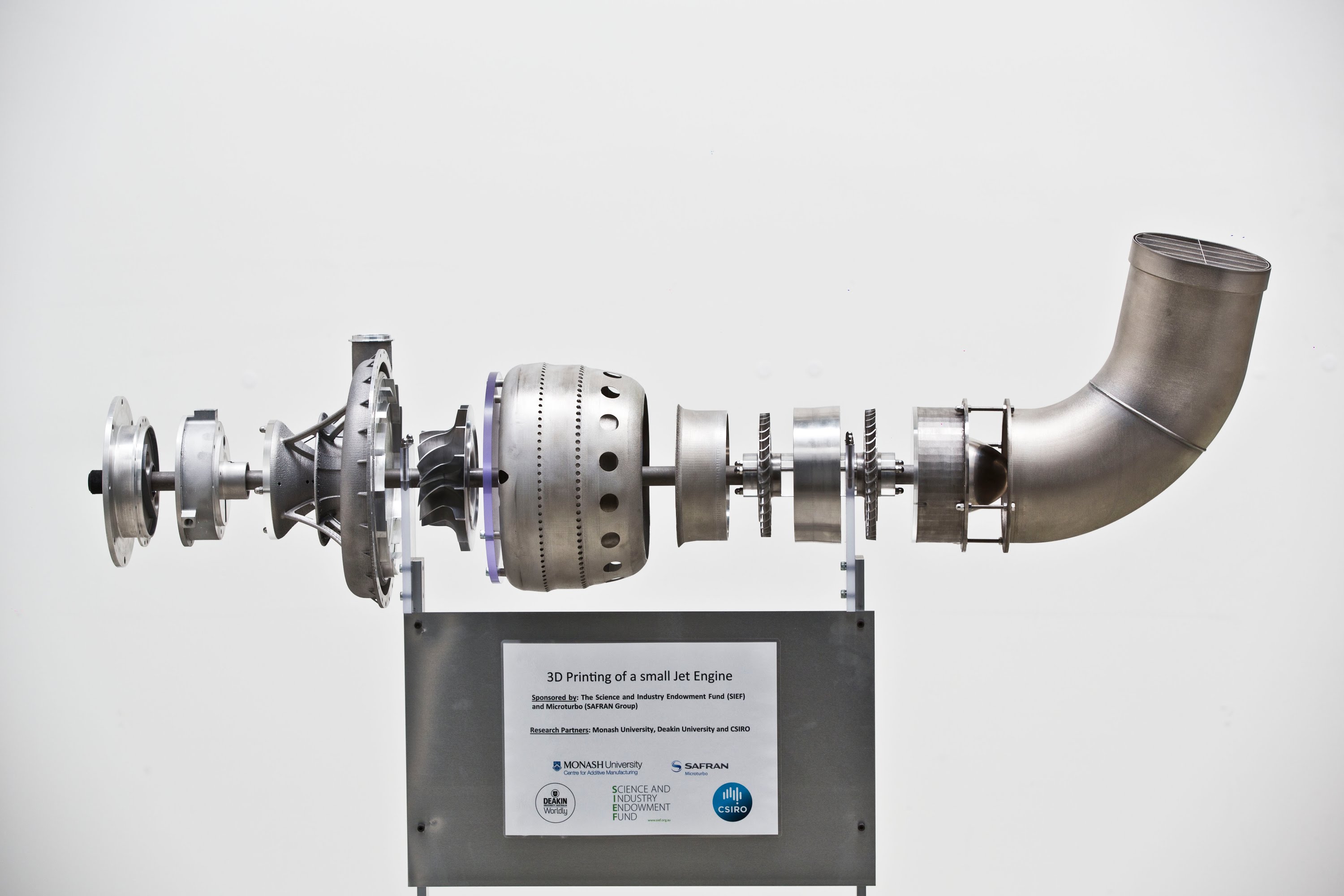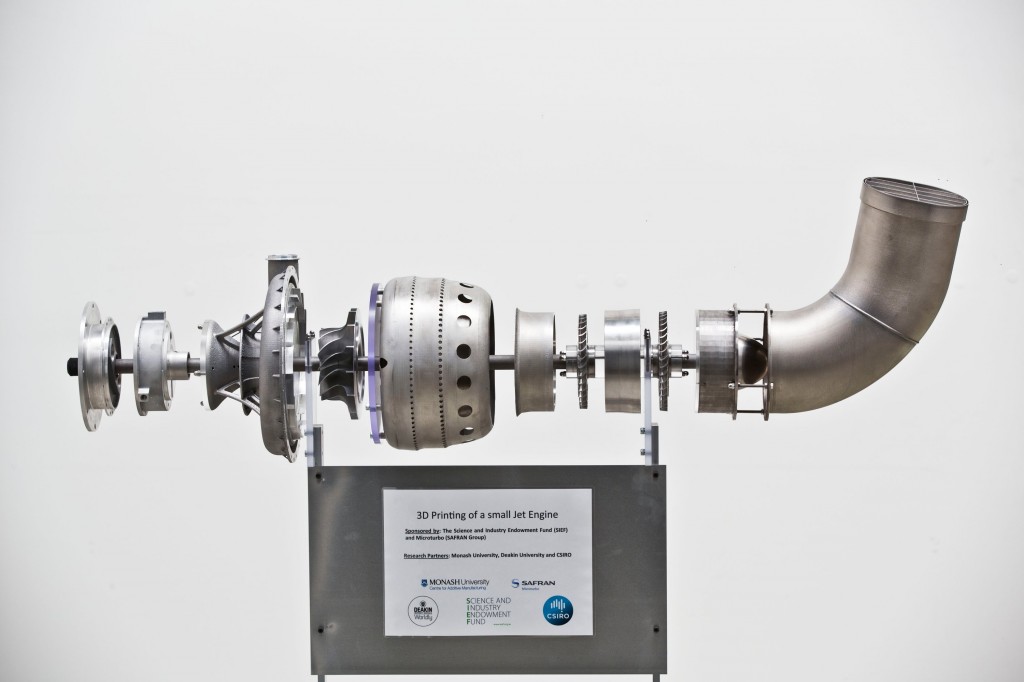Monash University 3D Prints Complete Jet Engine

Monash University has 3D printed the first complete jet engine. Courtesy of Monash University.
Latest News
February 27, 2015
It doesn’t seem all that long ago that various additive manufacturing (AM) experts were insisting that the technology was really only good for prototypes. Times have changed. 3D printing has become the focus of new manufacturing efforts in a number of fields, but has really taken off in aerospace and medical.
A number of companies are using, or investigating in methods of using AM to replace highly complex parts in a single build, rather than requiring multiple production methods and additional assembly. Australia’s Monash University (MU), along with its industry spinoff AMAERO Engineering, have gone one step further and produced an entire jet engine built with 3D printing.
 Monash University has 3D printed the first complete jet engine. Courtesy of Monash University.
Monash University has 3D printed the first complete jet engine. Courtesy of Monash University.The appeal in using AM for aerospace manufacturing is multifaceted, but generally can be tied to material conservation and weight reduction. Many of the materials used in aerospace construction are extremely expensive, and 3D printing wastes far less material than traditional methods. It is possible to build parts for AM that are just as strong and durable as parts built using traditional methods, while reducing the overall weight of the part, and eliminating redundant features.
The jet engine printed by MU is a proof-of-concept model of an existing gas turbine engine. MU chose the older design because of confidentiality agreements that wouldn’t have allowed the university to openly display the finished engine.
“It was our chance to prove what we could do,” says Professor Xinhua Wu, the director of the Monash Centre for Additive Manufacturing. “But when we reviewed the plans we realized that the engine had evolved over years of manufacture. So we took the engine to pieces and scanned the components. Then we printed two copies.”
AMAERO Engineering lists a Concept Laser XLine and two EOS INT 280M as available AM systems, so those systems may have been responsible for some or all of the build work required to complete the engine. Australia also produces many of the metals used for aerospace manufacturing, positioning it as a potential industry leader in the emerging field of 3D printed jet engines.
Below you’ll find a short video about the project.
Source: Monash University
Subscribe to our FREE magazine, FREE email newsletters or both!
Latest News
About the Author
John NewmanJohn Newman is a Digital Engineering contributor who focuses on 3D printing. Contact him via [email protected] and read his posts on Rapid Ready Technology.
Follow DE





